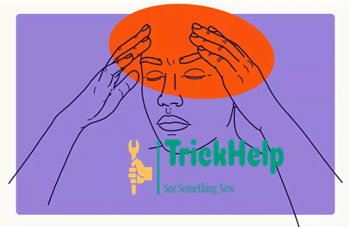Migraine is a common neurological disease causing throbbing, pulsing headaches, typically on one side. Other symptoms like nausea, vomiting, and sensitivity to light and sound often accompany this condition.
Migraine can greatly disrupt daily life and increase the risk of serious conditions like stroke and heart attack, requiring expert monitoring and treatment. The exact cause of migraines is not fully understood, but hormonal changes, certain medications, alcohol, caffeine, and stress are known triggers.
Treatment usually involves finding a calm environment, temperature therapy, and consuming a small amount of caffeine to alleviate pain. Understanding the underlying cause is crucial in managing and preventing migraine attacks. If experienced frequently, it is advisable to seek medical attention for proper diagnosis and personalized treatment.
What Is Migraine?
Migraine is a common neurological condition, often accompanied by a throbbing headache on one side of the head. Other symptoms may include nausea, vomiting, and sensitivity to light and sound. Hormonal changes, stress, certain medications, and other factors can trigger it.
Treatment may involve lifestyle adjustments and medication.
Factors Contributing To Migraines
Hormonal changes, medications, alcohol, caffeine, and stress can trigger migraines. Chemical compounds and hormones, such as serotonin and estrogen, can also play a role in causing pain sensitivity for migraine sufferers. While migraines are not usually dangerous, they can greatly disrupt daily life and may increase the risk of life-threatening conditions.
It’s essential to seek expert monitoring and treatments for chronic migraines.
Identifying Migraines
A migraine is a neurological condition characterized by a throbbing headache, often on one side. Symptoms may include nausea, sensitivity to light and sound, and visual disturbances. Identifying migraines involves recognizing these symptoms and triggers such as hormonal changes, stress, and certain foods to facilitate effective treatment and management.
Managing Migraine Symptoms
Migraine, a common neurological disease, is known for its diverse symptoms, including a throbbing headache on one side of the head. Hormonal changes, certain medications, alcohol, caffeine, and stress can trigger migraine attacks. Managing symptoms involves finding a calm environment, temperature therapy, and consuming a small amount of caffeine.
Non-Pharmacological Approaches
Migraine can be managed using non-pharmacological approaches such as relaxation techniques, stress management, and maintaining regular sleep patterns. These methods can help in reducing the frequency and intensity of migraine attacks, providing relief to those suffering from this condition.
Living With Migraines
Advancements In Migraine Research
Emerging treatments have shown promise in providing relief for migraine sufferers. The impact of technology on migraine research has opened new possibilities for understanding and treating the condition. With the potential for personalized care, individuals may benefit from tailored treatment plans that address their specific symptoms and triggers.
Frequently Asked Questions On What Is Migraine
What Is The Causes Of Migraine?
Hormonal changes, certain medications, alcohol, caffeine, and stress can trigger migraines. Chemical compounds and hormones play a role in pain sensitivity for migraine sufferers. Migraines disrupt life and may lead to stroke and heart attack. Find a calm environment, apply temperature therapy, and sip a caffeinated drink for relief.
What Happens In Migraine?
Migraine pain is often triggered by chemical compounds and hormones, such as serotonin and estrogen, causing waves of brain cell activity. While not usually life-threatening, migraines disrupt daily life and may increase the risk of stroke. Relief can be found through a calm environment, temperature therapy, and caffeine.
Is Migraine Serious?
Migraines can disrupt your life and increase the risk of stroke and heart attack, needing expert treatment.
How To Cure Migraine?
To cure migraine, find a calm environment, turn off lights, apply temperature therapy, and sip a caffeinated drink. Relaxing in a dark, quiet room is important to alleviate pain. Mayo Clinic and the American Migraine Foundation provide more comprehensive information on diagnosis and treatment.
Conclusion
Understanding the complexities of migraine and its impact on daily life is crucial. From hormonal triggers to the role of serotonin and estrogen, the pain and disruptions caused by migraines cannot be overlooked. Seeking calm environments, temperature therapy, and expert treatment can make a significant difference in managing and alleviating migraine symptoms.






Pingback: Peanut: Unlock the Secrets of Nutrition Experts | TrickHelp
Pingback: Cold Brew Vs Iced Coffee: Which is Healthier? | TrickHelp